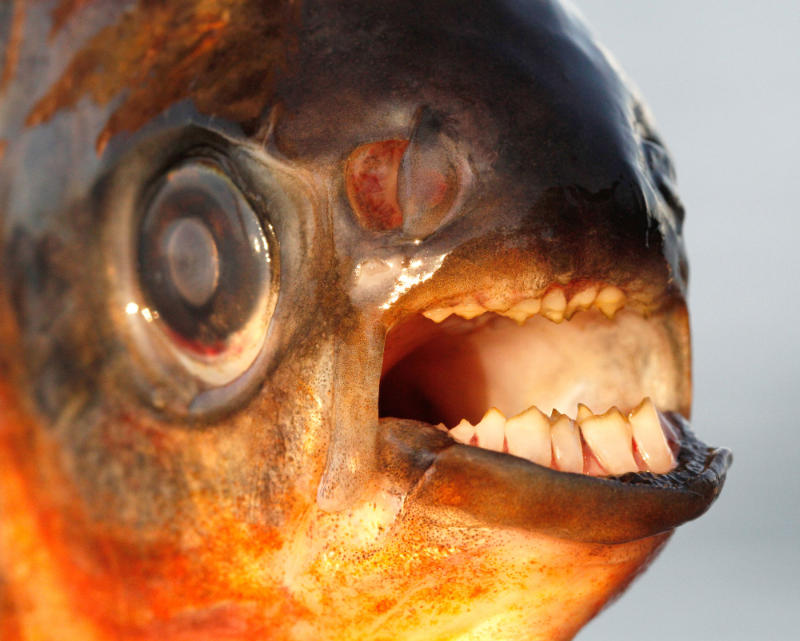Pacu
Pacu
In the Pantanal, the Pacu (Piaractus mesopotamicus) is one of the most important fish species for amateur and professional fishing, being captured in considerable quantities. It's a fruit-eating relative of the piranha - but isn't above grabbing other morsels which present themselves.
Pacu
The name pacu is associated primarily with three similar species of fish. All have the same general appearance and behaviour, and are prized by the local people for their sweet-tasting meat.
- Pacu-caranha (Piaractus mesopotamicus). This is the species encountered in the Pantanal. These are a wide oval shape, measuring up to 70 cm in length, and weighing up to 20 kg. Brown or grey in colour, with a yellowish underside.
- Pirapitinga (Piaractus brachypomus) or or pacu-negro. These are very similar, originating from the Amazon region. They measure up to 80 cm in length, weighing up to 25 kg. Dark grey, or black, with a reddish underside - and a second row of teeth along the upper jaw. This species is less popular as an eating fish - but popular with sports fishermen due to its reputation as a strong fighter. In the aquarium trade this species is known as the red-bellied pacu.
- Tambaqui (Colossoma macropomus). This also originates from the Amazon - measuring up to 90 cm in length, and weighing up to 30 kg. Grey or brown, with a black underside.
Behaviour and Habitat
The behaviour and diet of the tambaqui and pirapitinga of the Amazon region are broadly similar. However, these prefer the warmer tropical waters of northern Brazil, northeastern Bolivia, Peru, Colombia and Venezuela.
Scientific Name
Piaractus mesopotamicus

Local Name
Pacu or
Tambaqui

Description
Large oval or rhomboid fish. Pantanal species can reach 70 cm in length, and weigh 20 kg. Grey or brown with a yellowish underside. Related Amazon species are larger still.
Pacu teeth can be surprisingly human, including molars suited to the grinding of seeds and nuts. Photo: Henrik Carl.
Reproduction
Notes for Fishing
Local fishermen try attracting pacu by beating the water intermittently with a bamboo stick to simulate falling fruit, and using palm fruits as bait (fruits from the tucum or Astrocaryum vulgare palm are a popular choice). Other popular baits include oranges, crab meat, or cheese, sausage and even cookie dough containing a high fat content - which floats on the water, and is thought to carry the scent. A good steel hook with a strong nylon line should also be used to cope with the force exerted by such a large fish.
The various species of Pacu have proven a popular aquarium fish in the US and Europe, often being sold as a "vegetarian piranha". Photo: Jasper Nance.
Conservation and Threats
Dams and other barriers to natural migration paths can also interfere with pacu's reproductive cycle - resulting in fewer larvae or higher predation during their early development phases. Recent warnings by researchers have highlighted that reducing the population size also reduces the species' genetic diversity - presenting a further potential threat for survival.
Quick Facts
- The pacu move in shoals with dozens, sometimes hundreds of fish in streams and shallow channels, often mingling with piranha.
- Pacu are naturally timid. They usually maintain a good distance from swimmers and divers.
- Because of their food potential, pacu are increasingly being used for fish farming around the world. Within Brazil they've been bred to stock dams and ponds for fishing.
- A new hybrid species, the tambacu, has been developed for fish farming and aquaculture. This combines the larger size of the tambaqui with the pacu's resistance to colder water.
- Pacu, of various species, have proven to be a popular aquarium fish in the US and Europe. This may explain them occasionally turning up there in rivers and streams.
Banner image: Pacu (iStock/Ammit).

